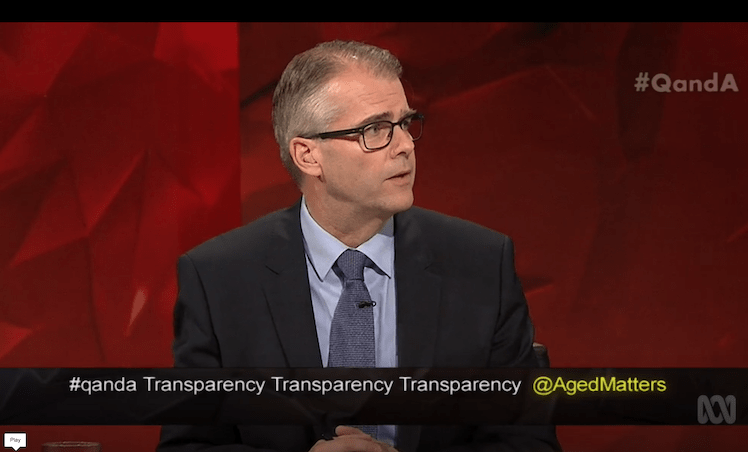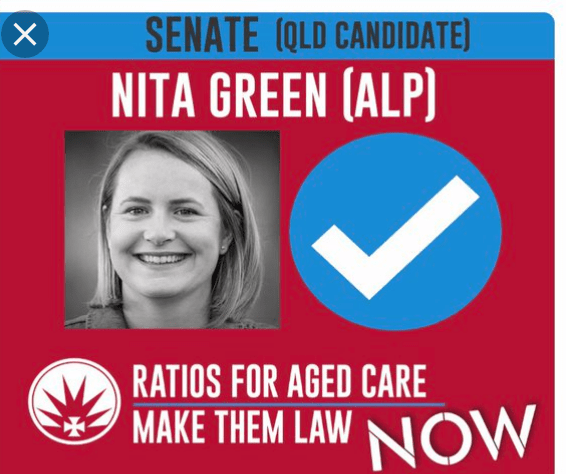Trust is the “mother’s milk” of democracy. So said Tanya Plibersek in a recent speech, emphasising the role politicians need to play in the battle to restore trust. Her speech coincided with the results of a study showing trust in government has reached its lowest level on record.
Home Care: operators snipping 50pc fees from the elderly in home care
The Australian National University’s ‘Australian Election Study’ found the majority of Australians believe our government is run for a “few big interests”. This is not surprising given the government’s response to the Royal Commission into Misconduct in the Banking, Superannuation and Financial Services Industry.
Further evidence showing just how those “few big interests” run our coalition government was on full show last week, when three critical amendments to the Aged Care Legislation Amendment (New Commissioner Functions) Bill 2019 were tabled. The Liberal-Nationals voted against all amendments.

Sean Rooney, CEO Leading Aged Services Australia — the peak that lobbied to block amendment of financial transparency (ABC’s Q&A Mon 30 September 2019)
If these amendments had gone through, they would have been a game changer for the aged care sector. They would have improved transparency and accountability around finances, staffing ratios and complaints in aged care homes.
Without financial transparency, the public has no way of knowing how providers spend the government subsidy, which is now a whopping $12.4 billion each year. Do they spend the subsidy on providing nursing care, meals and activities for residents or on sports cars for their executive team?
The public should be told exactly how much is spent on looking after the most vulnerable in our community. After all, it’s taxpayers’ money. We need figures showing exactly what per cent of government subsidies account for the profits within the aged care industry.
Killing it: Australian Unity takes its elderly Home Care customers to the cleaners
The peak bodies representing providers say they welcome transparency. Yet they lobbied against the financial transparency amendment by producing a “red tape” report. This report claimed that sharing financial data with the public leads to excessive costs. This claim is spurious given that providers share financial data with both the authoritative Stewart Brown accountants and the Department of Health.
Labor, the Greens, Centre Alliance and Jacqui Lambie voted to support financial transparency. However, despite the Royal Commission into Aged Care Quality and Safety showing that the public wants more transparency, a “few big interests” persuaded One Nation to vote against an amendment that was in the public’s interest.
These same “interests” are currently lobbying the government to give them more money. But they do not want the public to know how your taxes are spent. They feel entitled to keep this financial data top secret.
It is not only financial data that aged care providers refuse to share with the public. Information about standards of care and complaints are considered “commercial-in-confidence”. Data about the incidence of pressure injuries, dehydration, malnutrition, medication errors and number and type of falls remain hidden within a cone of silence.
Report calls for “Visibility” as bankers swarm around Aged Care
In our market-based aged care system, so-called “aged care consumers” are denied access to information to inform their choice of product. For example, to make an informed decision when choosing an aged care home, basic information about standards of care is surely just the start. However, aged care homes are not required to disclose their rosters/staffing levels. How can people make informed decisions about standards of care when they do not have access to this vital piece of information?
Recently the Queensland Labor Government announced that aged care homes must publish their staff numbers. The Queensland Government plans to name and shame those who refuse to report. In contrast, the Federal Coalition Government opposes the publication of staff ratios. The Government wrote a six-page submission in which they argued it
“appears to create a reporting burden on providers, with no clear benefits to consumers”.
Although Federal Labor is not committed to staff ratios, several members have shown their individual support for mandating staff ratios in aged care homes. Nita Green, for example, has her photo on a union meme indicating she supports staff ratios. Yet, when given an opportunity in the Senate to show support for making providers disclose staff ratios – an important first step towards mandating staff ratios – only members of the Greens and Centre Alliance supported the amendment. Nita Green and her seven Labor colleagues voted against the amendment.

The third amendment aimed to improve transparency about complaints. Making providers publish a report at the end of each month on the number of complaints received and how each complaint was resolved would undoubtedly help “aged care consumers” to assess standards of care in aged care homes. Yet again, without the coalition’s support, this amendment had no chance of success.
So instead of some game-changing amendments, a minor reform to the Aged Care Act was legislated last week. These reforms transferred some regulatory responsibilities to the Aged Care Quality and Safety Commissioner. Clearly, our government’s idea of reforming the aged care sector is to shift deck chairs on the titanic.
———————-
Dr Sarah Russell is a public health researcher. She is the Principal Researcher at Research Matters and Chair of Progressives of the Peninsula. She was formerly the Director, Aged Care Matters.

